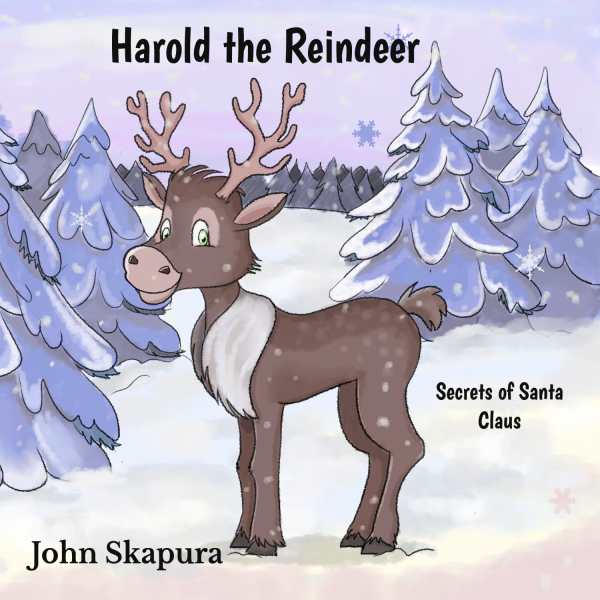
Harold the Reindeer
Secrets of Santa Claus
Harold’s journey emphasizes a deep belief that joy can be found even through unexpected developments.
Harold the Reindeer: Secrets of Santa Claus explores the rewards of pure-hearted, principled motivations. John Skapura’s tale of a reindeer who earns Santa’s praise is a fanciful twist on holiday tradition.
An ever-busy Santa is using magic to outsource work to his elves. They, in turn, need reindeer to pull their sleighs. So begins an annual test of strength and agility to determine which reindeer will head to the North Pole.
With only two- to three-year-old reindeer eligible, Harold is aging out of contention. In his last year to enter the Reindeer Challenge, he faces two rivals, all while battling an old leg injury.
The rich idea is hindered by pacing, omissions, and presentation. The competition is preceded by a lengthy windup that includes contextualizing explanations, and one detour to a deer from a petting zoo, which sets up a subtheme on differences and overcoming challenges that doesn’t entirely take off.
When the Reindeer Challenge finally arrives, there’s less anticipation than might be expected. The challenge is narrated in a forthright style that lists one event after another without the scene-building present at the start of the book.
Minimal cartoon illustrations by Ana Revello tend toward wide-eyed depictions of Harold, who, with one exception, is continually drawn facing left. The detail is striking for its repetitive sameness in a story that is otherwise a dynamic account of athleticism and motion.
A pleasing palette of lavender, powder blue, and white fits the wintry setting, yet the drawings seldom stray from the text. Without finer background details or full character designs to hint at the deer’s individualities, the story is less enlivened.
Only one drawing depicts the competition, and is set during the main event. Of all the events, the Magic Jump is the cleverest, requiring reindeer to jump into a square marked with an X to represent the rooftops Santa’s reindeer would land on. The feat combines nerve, as deer must first cross a gorge, and gymnastic-style deductions for stepping out.
When Harold loses to Vernon, a deer briefly characterized as having a boastful streak, the otherwise fun plot takes a moralizing swerve. Santa makes a speech that leaves Harold in charge of weighing the intentions of other deer in the next year’s competition. It’s an unexpected finish that drives home the message on graceful sportsmanship and personal attitudes. There’s a touch of idealism in the expectation that Vernon—who does win fairly—should also have upstanding character off the field.
Still, the fact that Harold doesn’t win allows him to find a new role. Harold’s journey emphasizes a deep belief that joy can be found even through unexpected developments.
Reviewed by
Karen Rigby
Disclosure: This article is not an endorsement, but a review. The publisher of this book provided free copies of the book and paid a small fee to have their book reviewed by a professional reviewer. Foreword Reviews and Clarion Reviews make no guarantee that the publisher will receive a positive review. Foreword Magazine, Inc. is disclosing this in accordance with the Federal Trade Commission’s 16 CFR, Part 255.
